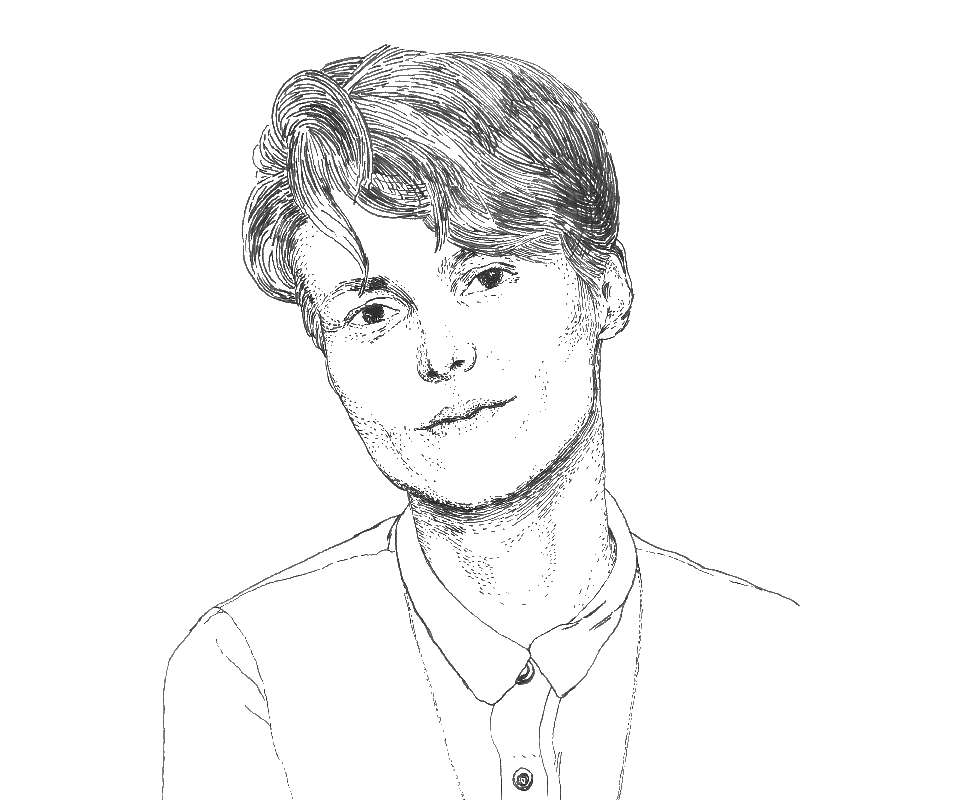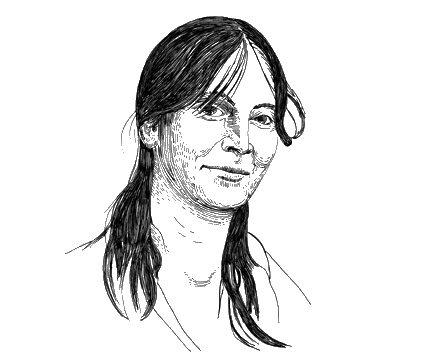Director's introduction
Design has the power to change the way we live, the way we produce and use goods, and the way we inhabit places. BIO is a transdisciplinary lab, a classroom, and a forum where its own powers are tested. This is why at BIO design will push you out of your comfort zone; it will present you with challenges that need to be answered and with possibilities that can be exploited. You will experience it on trails and trips you never meant to take. You will find it in territories and places you never meant to visit. At BIO, you will bump into design wherever you least expect it.
Faraway, So Close, this year's edition of BIO, focuses on Slovenia’s main potential: its landscape. Curators Angela Rui and Maja Vardjan have deployed international teams of designers to the woods, the karst underground, mining areas, the plains of the Pannonian Basin, the Slovenian coast, and the Slovenian Alps. The projects designed and presented at BIO seek to identify the potential of places that are only a stone’s throw away from the capital, yet are excluded from current discussions on the future. The most interesting part of the biennial and the key content of the exhibition held at the Museum of Architecture and Design is therefore on display in seven venues: Grosuplje, Kočevje, Kobarid, Lendava, Trbovlje, Piran, and Ljubljana.
BIO presents new models and strategies for tourism, for marketing and presenting attractions, for food production, and for the development and growth of possible new activities, all developed by designers through common research and cooperation with local organisations and businesses. More important, however, is the fact that through their fieldwork the designers have managed to mobilize a wider circle of people and organisations to take part in identifying opportunities and implementing changes necessitated by altered demographics, the climate, and economic reality—and this is exactly what reflects the power, ability, and relevance of design for a better common future.
Matevž Čelik
Director, MAO
Curatorial statement
FARAWAY, SO CLOSE
Good news: recent trends are showing that more and more people in Europe are leaving cities and settling in rural and other non-urban contexts. What’s more, this trend appears to be intensifying. Although the city remains the model within which the evolution of contemporary society is discussed and interpreted, and the absolute number of people living in large urban centres continues to increase, recent data point to a significant shift that is framed as a new phenomenon: informed and emancipated young people who have grown up in an urbanized model are taking their values to other anonymous contexts. Considering the Slovenian geographical, political, and economic aspects, the BIO 25 Biennial is an occasion to test the consequences of this initial paradigm. The country appears to be the perfect foundation for a discussion of the status of this global shift and as a way to test the “faraway” as a yet undefined area to explore once again. Faraway, So Close investigates the unprecedented ways with which the contemporary population interprets and activates the alter-urban by considering 'the “alter-“ as linked both to the notion of an alternative and to the concept of coexistence. New liberating frictions could emerge from the cohabitation of remote meanings and contemporary habits in the search for new territories to which we can give meaning, places that can be re-inhabited, where ancient relationships can be reenacted, basic coexistences re-imagined. At the collective level, it is a matter of inventing a common world and creating a global space for exchange. The Anthropocene arrives at the moment when we understand that geology is not distinct from human production. It thus becomes clear that we are producing our future environment. In what kind of conditions do we want to live? The theoretical appropriation of the alter-urban within the context of BIO 25 has been made possible by the decentralization of the biennial itself and also by the observations and responses of the participants. Seven multidisciplinary teams, led by international guest designers in dialogue with seven Slovenian professionals, were asked to explore precise locations as contemporary ruins, countryside, caves, forest, post-industrial sites, the Alps and the Mediterranean Sea as platforms from which to launch a discussion about our broader contemporary social condition. Each project starts with the formulation of a story, the so-called episode, where real context and hyper-fiction intersect. The overall goal is to activate a discourse around these situations, formulating questions and opening up possible scenarios and visions. Thus each location became a discursive space for a theoretical and design-related speculation.
For the designers, working in a precise local context provides an opportunity to discover their identity through an itinerary. Expeditionary projects work as a practice for the re-appropriation not only of landscape, but also of the design field. Through this dialogical signification, the figure of the designer as a contemporary subject is caught between the need for connecting the global and the specific, the need for combining individual identity and opening to the other. And each biennial fights its battle on the ground. BIO 25 actually leaves the institution, decentralizing across the whole country, and thus finds a different ground on which to test its efficiency and reach new audiences. The exhibition encapsulates the hardware of the biennial itself, focusing on two different categories to explore – sitespecific and museum – both considered by the teams through the design of two binary installations. If the aim of the on-site installations – which hopefully will endure – was the construction of a specific dialogue with the location, including the respective municipalities, institutions, and inhabitants, the museum represents the state of this specific instant in time and its urgency. It is a place for the construction of a broader narrative that will no doubt be perceived as faraway again as soon as the near future. But today it represents the place that opens possibilities for speculation related to the need to create a global space of exchange.
Curators

Angela Rui
Angela Rui is an Italian editor and curator based in Milan and Rotterdam, working in design theory and criticism. She was design editor for Abitare magazine (2011-2013), is currently writing for Italian and international design magazines, and curated the editorial project for Icon Design magazine (Mondadori, 2015), where she continues to work as contents consultant. She recently curated the 2015 edition of Operae, the independent design festival based in Turin, under the title “HERE/NOW. Under Present Effect”.
Rui has a particular fondness for the humanistic aspect of design: with “Meeting Mirabilia” she managed a series of live interviews from the studios of LiveOn4G (Telecom) to discuss the use of poetry, dreams, uncertainty, nature, and desire as new platforms for design (2014). For the Triennale Design Museum she curated the exhibition and catalogue “Ugo la Pietra. Disequilibrating Design” (2014), and for the Milan Design Film Festival (2014) co-wrote the short film “Seven Billions”, dedicated to the poetics of Andrea Branzi. She is passionate about the design counterculture, she taught at the School of Design (Politecnico di Milano) until 2015 and she is training future designers enrolled in the Master of Interior Design program at NABA, Nuova Accademia di Belle Arti in Milan.

Maja Vardjan
Maja Vardjan is an architect and curator. Following her time as creative director of the T5 Project Space gallery and the architecture editor of Ambient magazine, she now works as curator of architecture and design at the Museum of Architecture and Design (MAO). She is the author of the publication “Design in Dialogue” and curated the “Silent Revolutions: Contemporary Design in Slovenia” touring exhibition (MAO, 2011-2015). She also curated “Under the Common Roof”, an exhibition on modern public buildings drawing from MAO’s archive (MAO, 2013) and has served as a contributor and editor of several books and catalogues.
Maja Vardjan deserves much of the credit for the major changes and overall success of Ljubljana’s recent iterations of the Biennial of Design. Together with Jan Boelen and Cvetka Požar she co-curated the 24th Biennial of Design, BIO 50. In honour of BIO’s 50th anniversary, the team managed to change the focus and path of Europe’s oldest design biennial and to influence the traditional thinking behind and perception of the role of international biennials today. Most recently, she curated the exhibition Saša J. Maechtig: Systems, Structures, Strategies (MAO, 2015).
About BIO
BIO – The Biennial of Design in Ljubljana is an international platform for new approaches in design. BIO was founded back in 1963, making it the first design biennial in Europe. Witnessing the many shifts and changes of the last 50 years, BIO has seen design transition from its birth at the crossroads of industrialization and modernism to a discipline that permeates all layers of life and human endeavour.
Today BIO is structured as a long-term collaborative process, where teams of designers and multidisciplinary agents develop alternatives to established systems. BIO works as a testing ground, where design is employed as a tool to question and improve our daily life, among different and multidisciplinary design approaches that touch systems, production, services, scientific research, humanistic issues, unexpected conditions for the production of our habitat. The diverse array of topics resonates with both local and global demands, with its comprehensive projects aimed at creating resilient structures that develop over time, often beyond the duration of the Biennial.
Organisation
The Biennial of Design is organised by MAO, Slovenia’s national Museum of Architecture and Design.
MAO TEAM
Matevž Čelik, Director, Biennial of Design / Museum of Architecture and Design
Maja Šuštaršič, Head of Biennial of Design
Anja Zorko, Head of Marketing
Saša Štefe, Assistant to the Head of Biennial of Design
Špela Vidmar, Associated Projects Coordinator
Nikola Pongrac, Exhibition Coordinator
Ana Kuntarič, Pavlina Japelj, Public Relations
Natalija Lapajne, Educational Activities
Miha Valant, Maja Kovačič, Mojca Mikolič, Assistants
Matjaž Rozina, Tadej Golob, Technical Realisation
FARAWAY, SO CLOSE
Angela Rui and Maja Vardjan, Curators
Claudia Mainardi, Assistant Curator
Mojca Mihailovič-Škrinjar, Ad-Hoc Business Support, Design Facilitator
Grupa Ee, Visual Identity
Luca Fattore, Infographic
Sadar+Vuga, d. o. o., Design of Introduction Room and Location Signage
Goran Medjugorac, Illustrations
Delfino Sisto Legnani, Marco Cappelletti, Photos
Organising Committee BIO 25
Janez Škrabec, President of the BIO Organising Committee, Director Riko
Zdravko Počivalšek, Minister, Ministry of Economic Development and Technology
Karl Erjavec, Minister, Ministry of Foreign Affairs
Prof. Janez Koželj, Deputy mayor, City of Ljubljana
Andrej Božič, General Manager, Steklarna Hrastnik
Andrej Slapar, President of the Management Board, Zavarovalnica Triglav
Boštjan Botas Kenda, Dean, Academy of Fine Arts and Design, University of Ljubljana
mag. Franjo Bobinac, President of the Management Board, Gorenje
Julijan Fortunat, President of the Management Board, Salonit Anhovo
mag. Lilijana Madjar, Director, Regional Development Agency of the Ljubljana Urban Region
mag. Petra Stušek, Director, Ljubljana Tourism
mag. Tomaž Berločnik, President of the Management Board, Petrol
Marko Kolbl, Director, Europlakat
Medeja Lončar, Director, Siemens Slovenija
Stojan Petrič, Director, Kolektor Group
Past BIO
24th Biennial of Design
Ljubljana, Slovenia
18. 9.–7. 12. 2014
